Not only fashionistas dream of diversifying the design of fabric. People tried to solve this problem back in ancient times. One of the ways to solve the problem was soaking the fabric in decoctions of various plants that colored the water. At that time, they only achieved a dirty yellow or brown shade. The usual colors of clothes for people without wealth. The rich preferred brighter colors. Red and Leonardo's shade of brocade were considered rare. They were the prerogative of royal dynasties.
What paints to choose
Unlike the old days, when only natural dyes were used, there are many artificial dyes in modern production. Due to the fact that their composition is different, they are classified into:
- acrylic;
- aniline;
- stamp;
- plastisol;
- natural.

The choice of paint depends on the goal and type of material. For example, natural and aniline dyes will perfectly cope with the task of uniform coloring. And to obtain a pattern on the surface of the fabric, it is better to choose luminous and acrylic.
Natural dyes
Natural dyes have been known since ancient times. The most common of them were:
- onion peel;
- coffee;
- tea;
- juices from berries or vegetables;
- nettle leaves;
- citrus zest;
- turmeric;
- buckwheat leaves;
- oak bark;
- tansy and others.
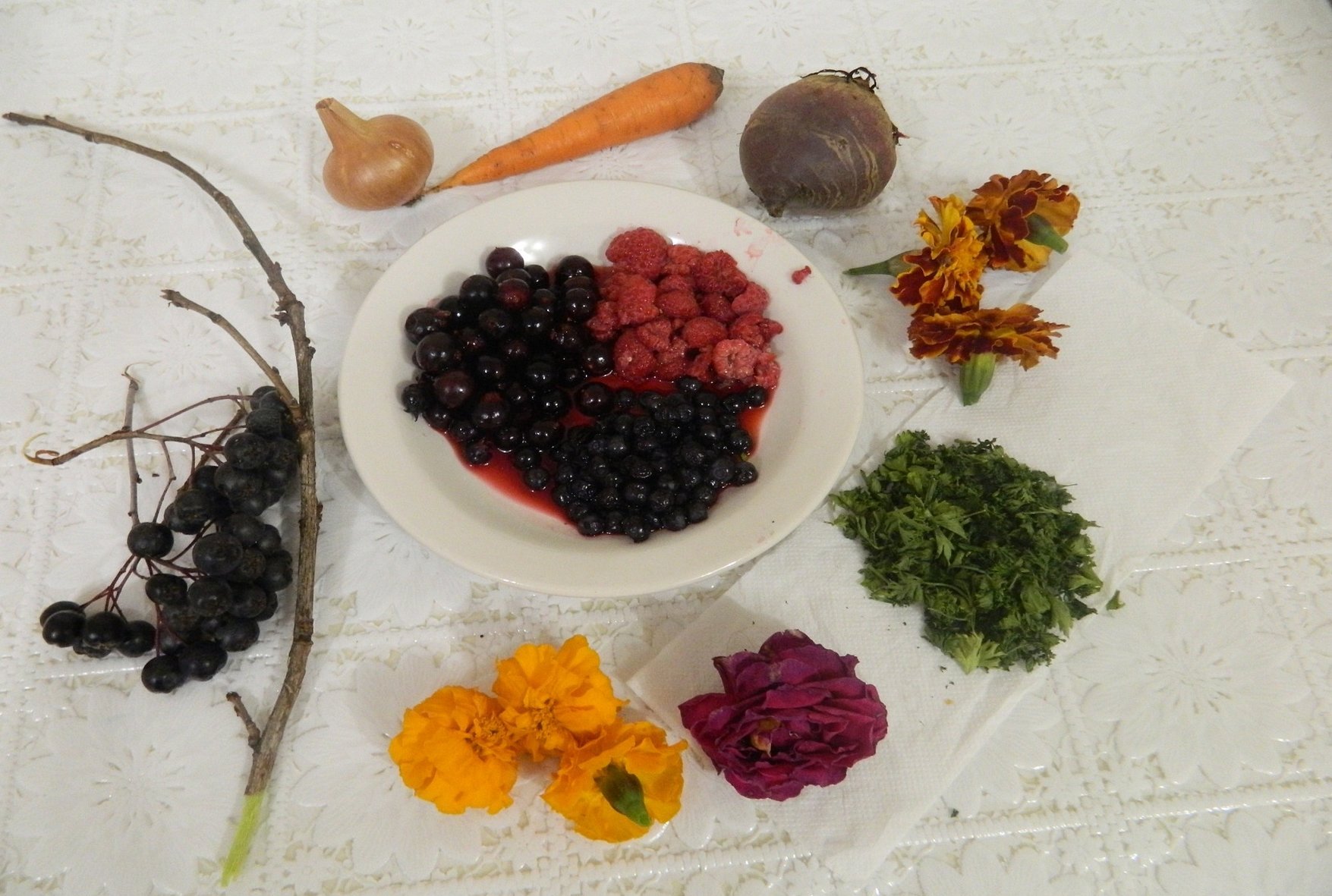
One of the advantages of natural dyes is their environmental friendliness. If consumers suffer from allergies to synthetic dyes, it is better to use natural material.
Aniline dyes
Aniline dyes are available in powder or liquid form. They are mainly used for uniform dyeing of fabrics made from natural materials. Using the dye to transform synthetic and mixed fabrics, high quality is not guaranteed. You can try it for products that contain no more than 60% artificial threads.
Acrylic paints for painting on fabric
Acrylic paints for clothes, i.e. water-dispersion paints, are used for painting on fabric. They can be diluted with water, and they do not have an unpleasant toxic smell. They are water-based, but after application and complete drying, they become indelible.
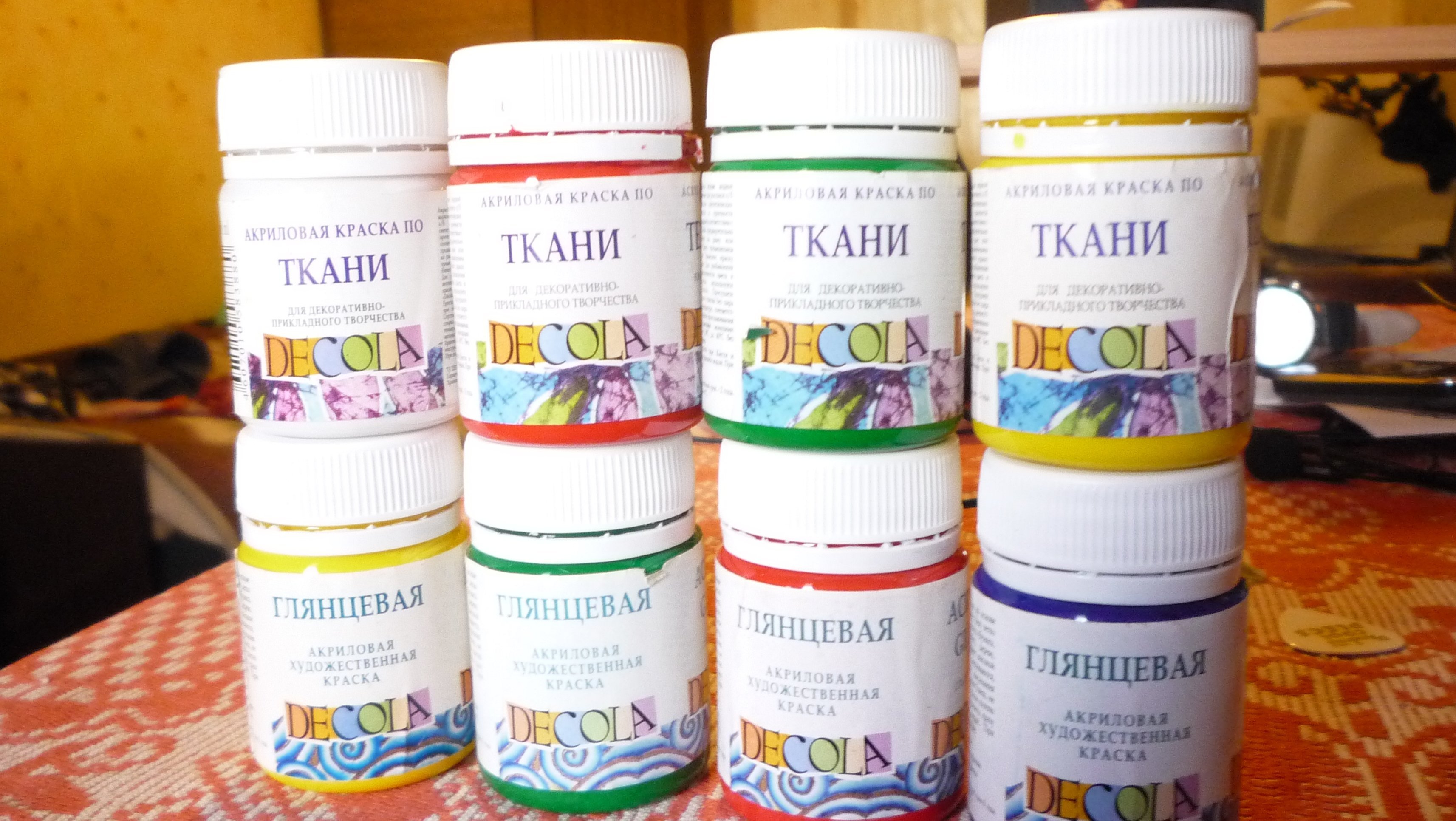
Important! It is recommended to wash items with acrylic patterns by hand with a gentle washing powder. The water temperature should not exceed 40WITH.
Manufacturers produce them in various packaging:
- Tubes. They are considered the most economical option. After use, the tube is tightly closed, which prevents the remaining material from spoiling.
- Aerosol in spray cans. Used to apply paint to a large area by spraying. After such painting, the fabric becomes more rigid and loses its elastic properties.
- Spray. Applied to the base by dripping. There is no pressure inside the container.
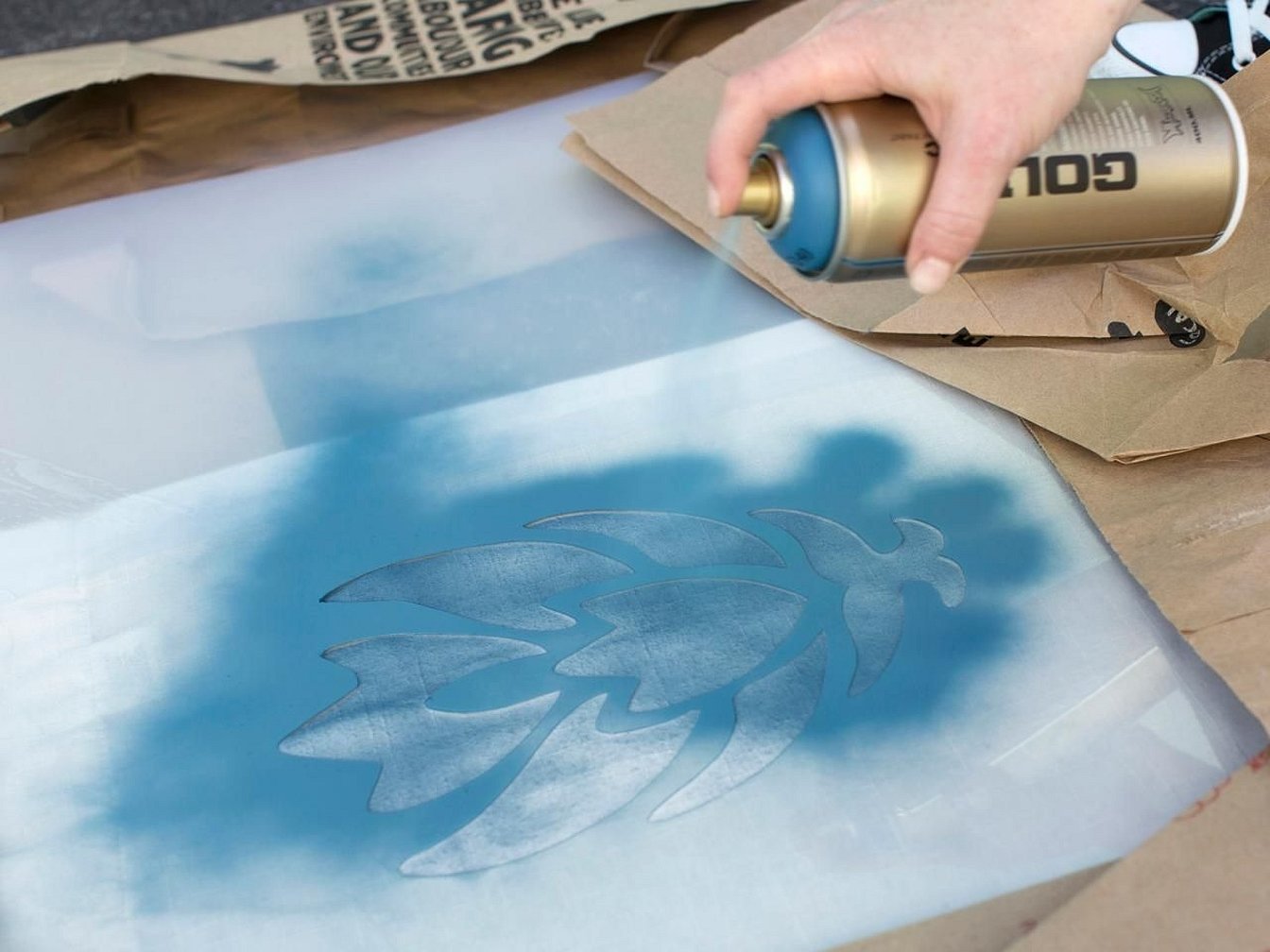
Plastisol paints
Many have seen luminous patterns on clothes or shoes. Especially those who like to have fun in clubs. Luminous appliques have also become fashionable on children's clothing. To achieve this effect, plastisol paint for synthetic fabrics is used.
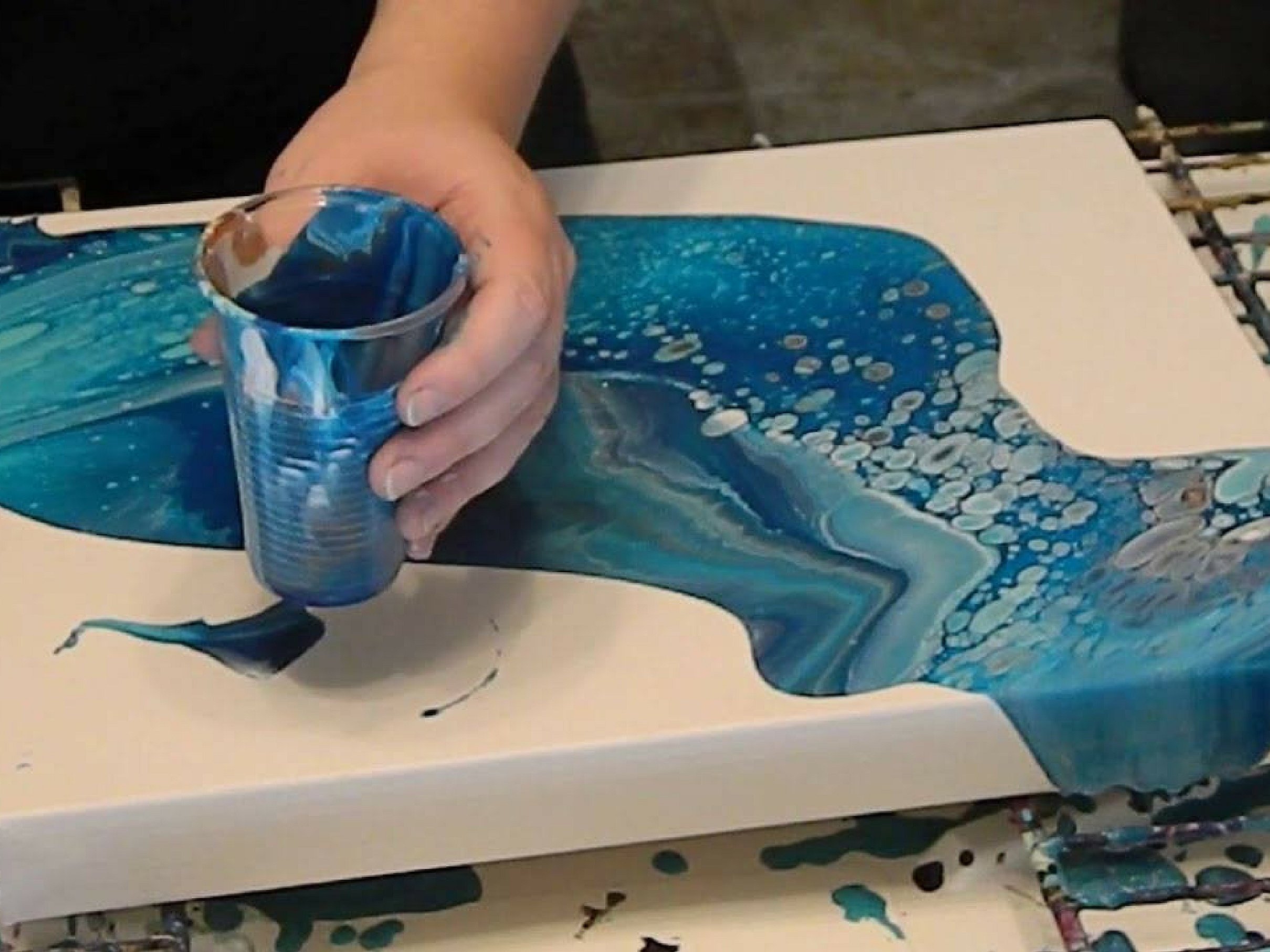
There are two types of luminescent composition on sale:
- glow under the influence of ultraviolet rays;
- visible both under ultraviolet light and in the dark.
In addition, they can be visible and invisible. That is, in daylight, invisible drawings are visible only in white. And in the dark, they can shine in any color.
Popular manufacturers and customer reviews
There is a huge range of fabric dyes available in stores. The most popular are several of them, which have proven themselves to be excellent in the quality of the process.
Simplicol paint
With the help of the indelible fabric paint Simplicol Textilfarbe (150 g), you can implement any idea and get the desired result. The brightness of the shade is achieved by dosing the paint. The kit includes dye powder and fixing salt.
One package can dye 0.3 kg of fabric in a bright color, 0.6 kg in soft shades. The entire spectrum of shades depending on the dosage is indicated on the package in the form of a scale.
Decola
Fabric dye is used to apply a pattern on cotton, silk and synthetics. A brush or stencil is used. The base must be dry and clean. The pattern is left to dry for 2 to 6 hours, fixed on the reverse side with an iron, turning off the steam mode.
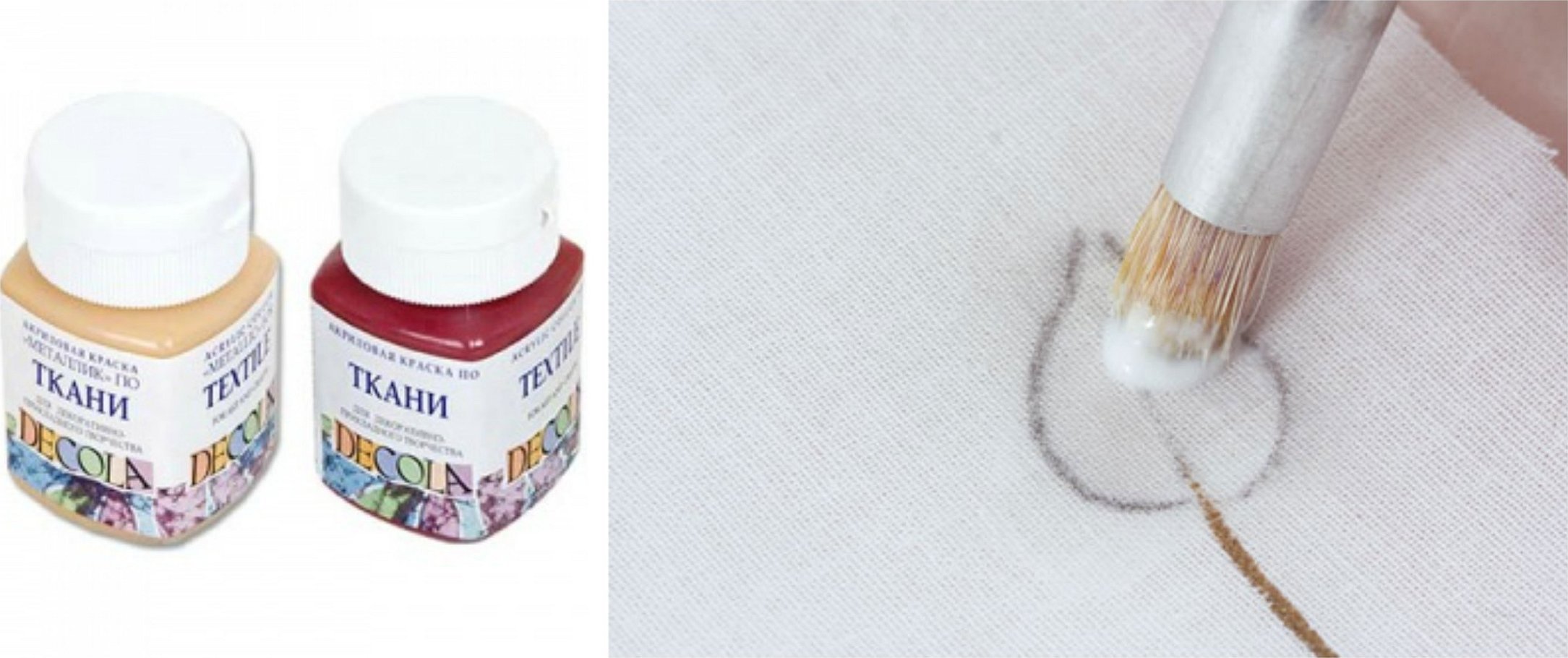
Procion H
Liquid concentrated dye Procion H Dyes, which even beginners can work with. It is used for all types of fabric, such as cotton, wool, denim, etc. It is fixed by steaming with an iron.
Dyes»Gamma»
Aniline dye for fabric, before the dyeing process is diluted with water in a ratio of 2:1. When dyeing, strictly follow the instructions. Fixed by applying steam from an iron.
Elbesoie
Many experts like to work with Elbesoie textile paint, describing them as the best compositions for dyeing fabric. Homogeneous mass, easy to apply to fabric. Lightfast, water-soluble. Fixed with an iron in steam mode.
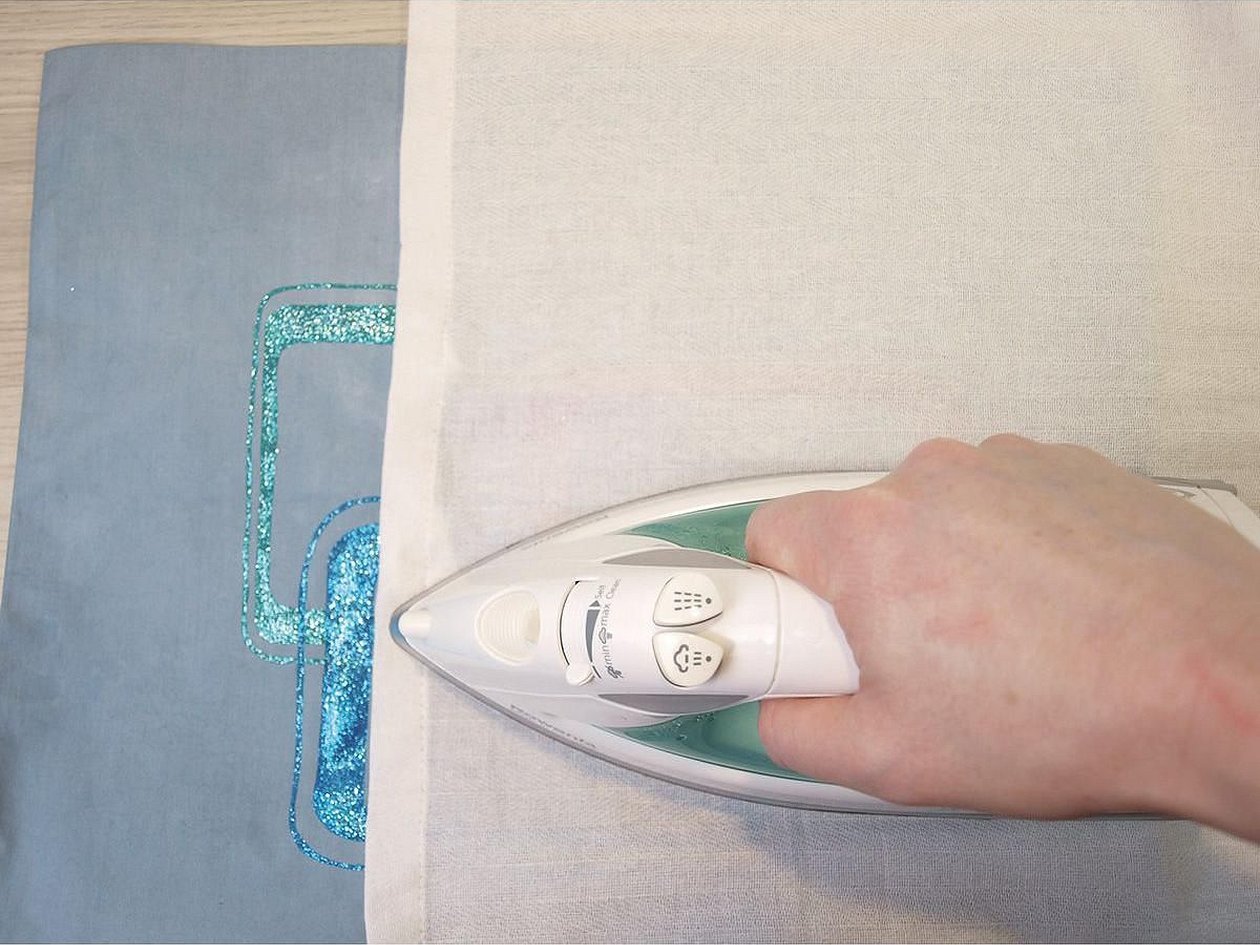
What types of fabrics can be dyed?
Everyone wants to diversify their clothes, to look original. One way is to paint them in a different color or apply a pattern. This is especially relevant for children's clothes. They often leave stains that are impossible to remove. The only way is to paint them in a darker color.
But not all types of fabrics can be dyed at home. For example, a material containing a large percentage of synthetics cannot be dyed independently with aniline dyes. Even if the color changes at first, after the first wash it will fade, and the shade of the fabric will become an indefinite shade. To dye this type of fabric, specialized dyes are used with a certain technology and temperature conditions.
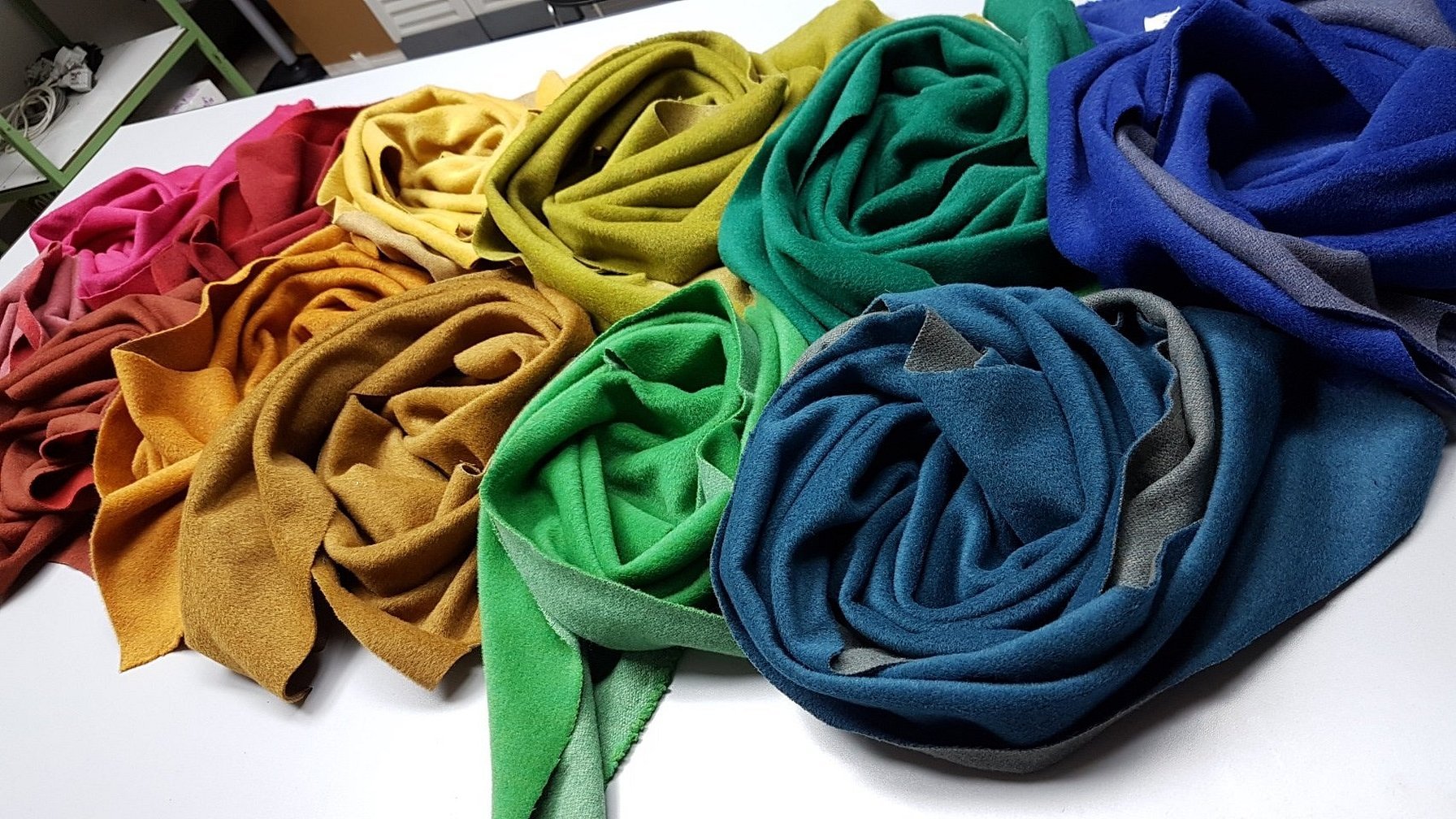
Cotton and woolen fabrics are easy to repaint at home. This is due to the fact that the structure of these fibers absorbs colored liquid well and can preserve them for a long time.
Therefore, if you want to diversify your wardrobe, you can buy several universal white cotton T-shirts and dyes of the desired shades. White is easy to give the desired coloring, and the color is transmitted most accurately.
Important! It is important to take into account that the resulting shade of the dyed item will differ from the color of the dye.
Necessary tools for application
Before you begin the painting procedure, you need to prepare:
- textiles for painting;
- a container that can accommodate the item to be painted;
- a wooden stick or spatula;
- water;
- dye;
- gloves to protect hands.
Preparatory work
First of all, start preparing the fabric to be dyed. It should be clean and not have stains darker than the paint you are re-dying with. If there are any, they should be removed with a stain remover.
Important! If the stains cannot be removed, then you need to select a dye shade that is darker than the stains themselves. For example, black fabric dye.
Before dyeing clothes, you must:
- make sure there are no metal objects on it, such as buttons, zippers, etc.;
- Starch must be removed from new cotton and linen items by washing them first;
- woolen products are rinsed in a solution of water and ammonia - 2 tablespoons are added to 12 liters, respectively;
- The skeins of yarn are tied in several places to prevent the threads from getting tangled.
The next step is to prepare a container for painting. The dishes are clean, preferably enameled. You can use galvanized or aluminum vessels, but remove all traces of scale from them before starting the process. The volume of the container should correspond to the size of the item being painted. It should be completely immersed in the composition and not wrinkled. Otherwise, there is a risk of getting an unevenly painted item.
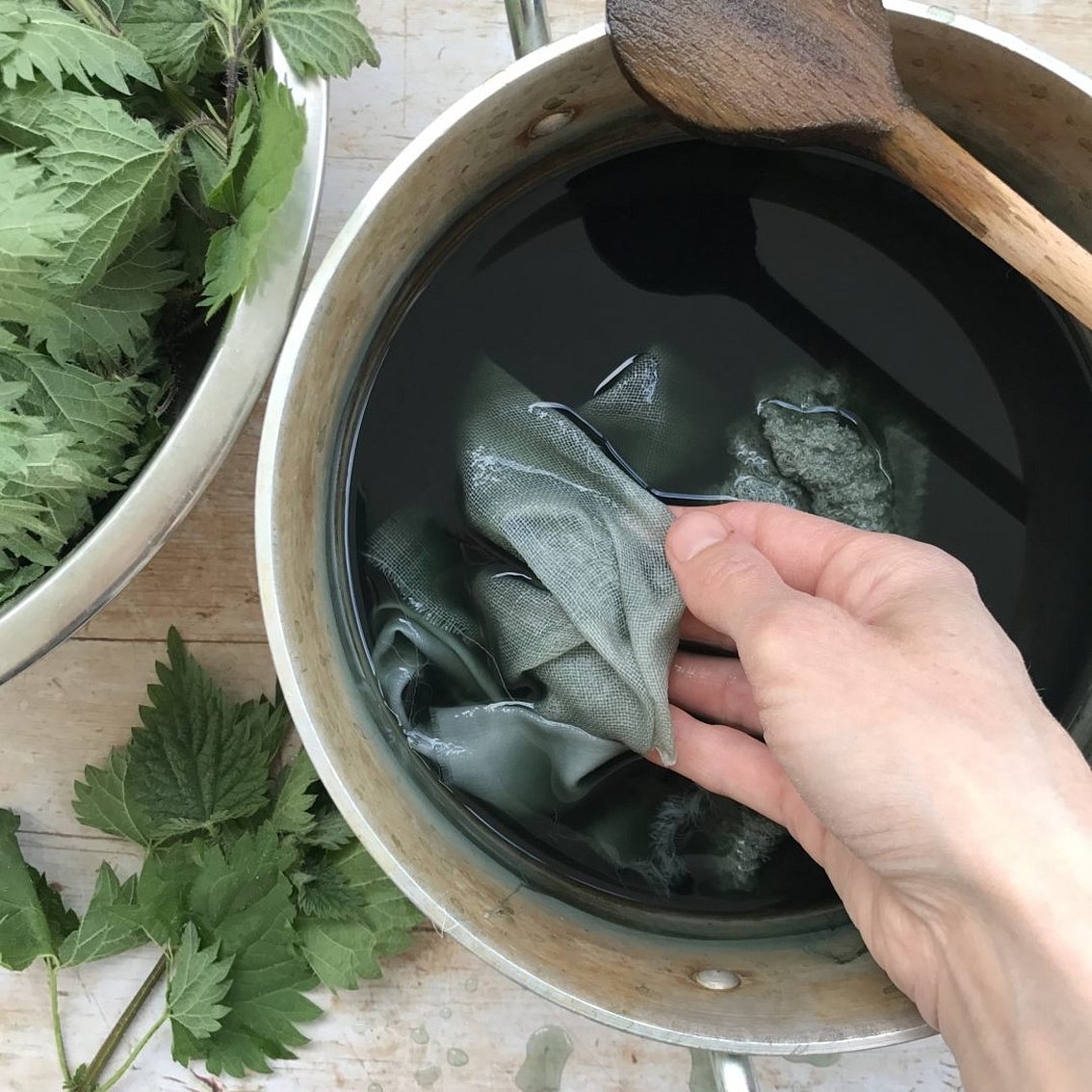
Wooden sticks are used to turn things over. Their surface should be smooth and without knots, so as not to damage the clothes.
The water is soft. It is better if it is rain or melt water. If there is none, then the hardness can be reduced by adding 1 tbsp. of soda per 12 liters of liquid.
Dyeing technology
After the preparatory activities, proceed directly to painting the products. According to the instructions, dilute the paint in a small container, stirring the solution well. Then filter it and send it to the painting container, adding the required amount of water.
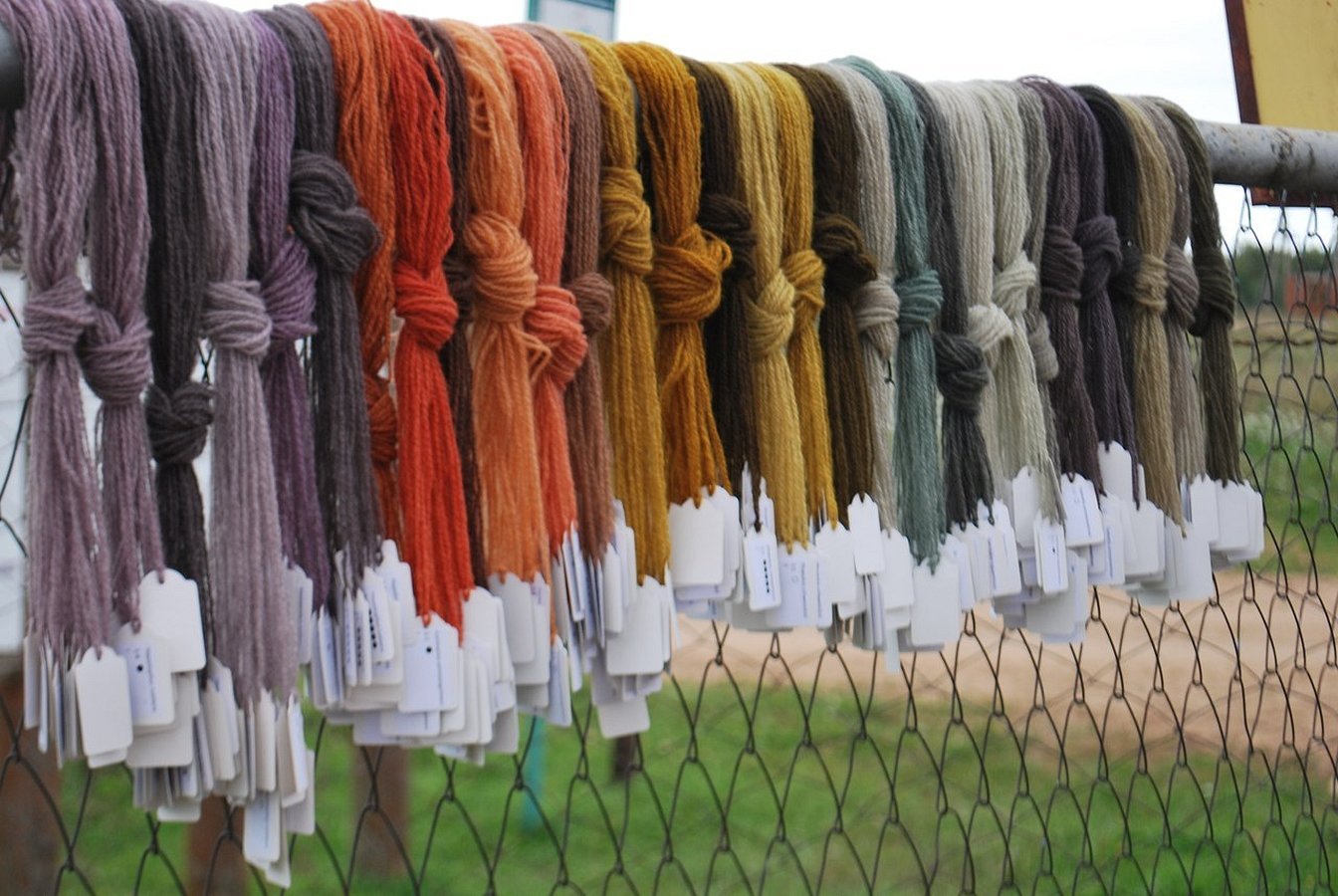
The solution is heated over a fire and the item is immersed in it. To achieve uniform coloring, the fabric is rotated in a circle using wooden sticks. As soon as the item acquires a color slightly darker than desired, it is removed from the solution. When dry, the shade will become lighter.
If it is necessary to obtain streaks during dyeing, the product is twisted and fixed in this state with rubber rings. In this form, it is immersed in the dye.
After the item has been removed from the solution, it is rinsed in clean water several times until the liquid becomes clear.
Important! It is not recommended to dry dyed items in the sun or near a stove.
A huge selection of compositions can lead consumers into confusion. To choose the right composition, you must first select the dyeing technology and type of fabric. After that, reading the instructions, select the desired option.




